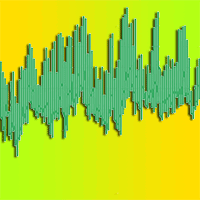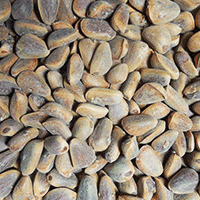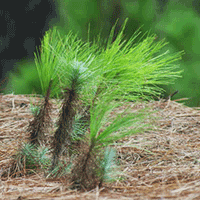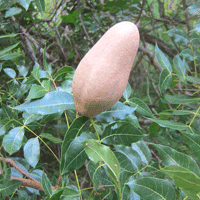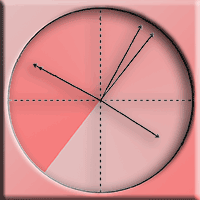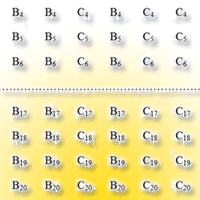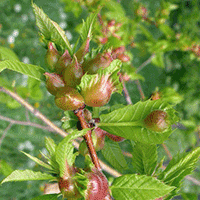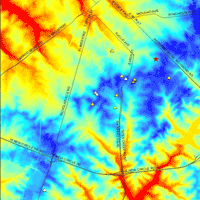
Spread intensity and invasiveness of sycamore maple (Acer pseudoplatanus L.) in Lithuanian forests
Lina Straigyte , Virgilijus Baliuckas
iForest - Biogeosciences and Forestry, Volume 8, Issue 5, Pages 693-699 (2015)
doi: https://doi.org/10.3832/ifor0763-007
Published: Mar 19, 2015 - Copyright © 2015 SISEF
Research Articles
Abstract
The primary objectives of this study were to estimate seedling abundance, spread intensity, and invasiveness of sycamore maple (Acer pseudoplatanus L.) in Lithuanian forests. The species was introduced to Lithuania in 1802, and since then has subsequently become gradually invasive. Seedling understory abundance, colonization and dispersal were investigated in six forest blocks covering the principal sycamore distribution areas in southwestern Lithuania. Seedlings height and densities in the undestory were evaluated, and seedlings assigned to four height groups. Species invasiveness was estimated applying the Pest Plant Prioritization Process (PPPP), based on the Analytic Hierarchy Process (AHP) method. Results showed the average spread distance from the parent tree was 257 m, with a mean seedling number per hectare of 2064. Sycamore maple invasive score was 0.6426 (range: 0-1), the current relative to potential distribution rating was 0.57, and the social, environmental, and economic impact score was 0.1682. Such values were used to assess the Pest Plant Score for sycamore maple, obtaining a value (0.3537) lower than expectations (0.5). Results indicated that the species exhibits invasive properties and a rapid spread in the study area. Some implications of the above results in view of the upcoming climate change and the use of sycamore maple in Lithuanian forest plantations are discussed.
Keywords
Sycamore, Seedling spread, PPPP, Invasiveness, Pest Plant Score
Authors’ Info
Authors’ address
Virgilijus Baliuckas
Aleksandras Stulginskis University, Faculty of Forest Science and Ecology, Institute of Forest Biology and Silviculture, Studentu 11, LT-53361 Akademija, Kaunas district (Lithuania)
Corresponding author
Paper Info
Citation
Straigyte L, Baliuckas V (2015). Spread intensity and invasiveness of sycamore maple (Acer pseudoplatanus L.) in Lithuanian forests. iForest 8: 693-699. - doi: 10.3832/ifor0763-007
Academic Editor
Renzo Motta
Paper history
Received: Sep 06, 2012
Accepted: Feb 20, 2015
First online: Mar 19, 2015
Publication Date: Oct 01, 2015
Publication Time: 0.90 months
Copyright Information
© SISEF - The Italian Society of Silviculture and Forest Ecology 2015
Open Access
This article is distributed under the terms of the Creative Commons Attribution-Non Commercial 4.0 International (https://creativecommons.org/licenses/by-nc/4.0/), which permits unrestricted use, distribution, and reproduction in any medium, provided you give appropriate credit to the original author(s) and the source, provide a link to the Creative Commons license, and indicate if changes were made.
Web Metrics
Breakdown by View Type
Article Usage
Total Article Views: 51939
(from publication date up to now)
Breakdown by View Type
HTML Page Views: 44089
Abstract Page Views: 2683
PDF Downloads: 3652
Citation/Reference Downloads: 18
XML Downloads: 1497
Web Metrics
Days since publication: 3917
Overall contacts: 51939
Avg. contacts per week: 92.82
Citation Metrics
Article Citations
Article citations are based on data periodically collected from the Clarivate Web of Science web site
(last update: Mar 2025)
(No citations were found up to date. Please come back later)
Publication Metrics
by Dimensions ©
Articles citing this article
List of the papers citing this article based on CrossRef Cited-by.
References
Die Klimate der Erde [Climates of the Earth]. Deutscher Verlag der Wissenschaften, Berlin, Germany, pp. 277. [in German]
Gscholar
Patterns of invasion of sycamore (Acer pseudoplatanus L.) in relation to species and ecosystem attributes. PhD Thesis, University of Ulster, Londonderry, UK.
Gscholar
Systematyka I geograficzne rozmieszczenie [Systematics and geographical distribution]. Monografie “Nasze drzewa lesne”, volume 18, Klony, Polish Science Academy, Poznan-Kornik, Poland, pp. 15-73. [in Polish]
Gscholar
Lehrbuch des waldbaus: ein leitfaden für studium und praxis [Textbook of silviculture: a guide for the study and practice] (2nd edn). Parey Verlag, Berlin, Germany, pp. 487. [in German]
Gscholar
Wyniki dziesiecioletnich obserwacji fenologicznych nad drzewami i krzewami w Arboretum Kornickim [Results of ten-year phenological observations over trees and shrubs in the Kórnickie arboretum]. Arbor. Kornickie 13: 37-120. [in Polish]
Gscholar
Plant invaders: the treath to natural ecosystems. Chapman and Hall, New York, USA, pp. 241.
Gscholar
Dynamique initiale de la végétation herbacée et de la régénération ligneuse dans le cas de trouées, au sein d’une hêtraie (Luzulo-Fagetum). Quels enseignements tirer de la tempête de décembre 1999 dans les Vosges du Nord? [Initial dynamics of herbaceous and woody regeneration in the case of holes, in a beech forest (Luzulo-Fagetum). What can we learn from December 1999 storm in the northern Vosges?]. PhD dissertation, Université Catholique de Louvain, Belgium, pp. 342. [in French]
Gscholar
Rodzime klony w obszarach I obiektach chronionych w Polsce [Native maples in protected areas in Poland]. Monografie "Nasze Drzewa Lesne", volume 18, Klony. Polish Science Academy, Poznan-Kornik, Poland, pp. 567-642. [in Polish]
Gscholar
Lietuvos klimatas [Lithuanian climate]. Monography, Vaga, Vilnius, Lithuania, pp. 207. [in Lithuanian]
Gscholar
Sumedejusiu augalu introdukcija ir aklimatizacija bei ju rezultatai ir perspektyvos Lietuvoje [Woody plant introduction and acclimatization: results and prospects for Lithuania]. Lutute, Kaunas, Lithuania, pp. 392. [in Lithuanian]
Gscholar
Ærdyrkning specielt med henblik på Sjælland og Lolland-Falster [Sycamore maple cultivation, especially for growing on Seeland and Lolland]. Dansk Skovforenings Tidsskrift 58: 333-360. [in Danish]
Gscholar
Present-day and future precipitation in the Baltic Sea region as simulated in a suite of regional climate models. Climatic Change 81 (1): 281-291.
Gscholar
Die Anfälligkeit der Wälder Deutschlands gegenüber dem Klimawandel [The vulnerability of German forests to climate change]. Gefahrstoffe 67: 259-268. [in German]
Gscholar
Klimahüllen für 27 waldbaumarten [Climate envelope for 27 forest tree species]. Allgemeine Forstzeitschrift/ Der Wald 23: 1242-1245. [in German]
Gscholar
Allelopathy as expressed by sugar maple on yellow birch. Dissertation Abstract, International B. Science and Engineering 33: 1877-1839.
Gscholar
Bioclimatic prediction of the potential distribution of skeleton weed (Chondrilla juncea L.) in western Australia. Journal of the Australian Institute of Agricultural Science 53: 11-16.
Gscholar
Seed dormancy: changing concepts of its regulation. In: “Growth regulatiors and seeds” (Black M eds). British Plant Growth Regular Group, Monograph, vol. 15, British Plant Growth Regular Group, Bristol, UK, pp. 1-15.
Gscholar
Invasiveness and ecological effects of Red Oak (Quercus rubra L.) in Lithuanian forests. Baltic Forestry 14 (2): 122-130.
Gscholar
Decision making for leaders: the analytical hierarchy process for decisions in a complex world. RWS Publications, Pittsburgh, PA, USA, pp. 292.
Gscholar
Introduction of woody plants in Vilnius University Botanical Garden in 1781-2000. PhD thesis, Nature Sciences Department, Vilnius University, Lithuania, pp.135. [in Lithuanian]
Gscholar
Effect of climate variability on Quercur rubra L. phenotype and spread in Lithuanian forest. Dendrobiology 67: 79-85.
Gscholar
Germination of tree seed stored in a partially after ripened condition. Acta Horticulturae 83: 181-187.
Gscholar
How to achieve simultaneous germination of after-ripened hardwood seed. In: Proceedings of the “Symposium on establishment and treatment of high quality hardwood forests in the temperate climatic region”. Nancy - Champenoux (France) 11-15 sep 1978. INRA, Centre National de Recherches Forestieres 78/08, France, pp. 30-40.
Gscholar
Æren trænger sig frem [The sycamore maple is spreading]. Dansk Skovbrugs Tidsskrift 86: 1-96. [in Danish]
Gscholar
Comparative analysis of invasion intensity of box elder (Acer negundo L.) and sosnowskyi hogweed (Heracleum sosnowskyj Manden). Rural Development 5 (2): 161-166.
Gscholar
Victoria’s pest plant prioritisation process. In: Proceedings of the “13th Australian weeds conference” (Dodd J, Moore JH, Spafford HJ eds). Perth (Australia), 8-13 sep 2002. Plant Protection Society of Western Australia, Perth, Australia, pp. 509-512.
Gscholar

